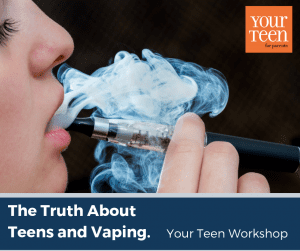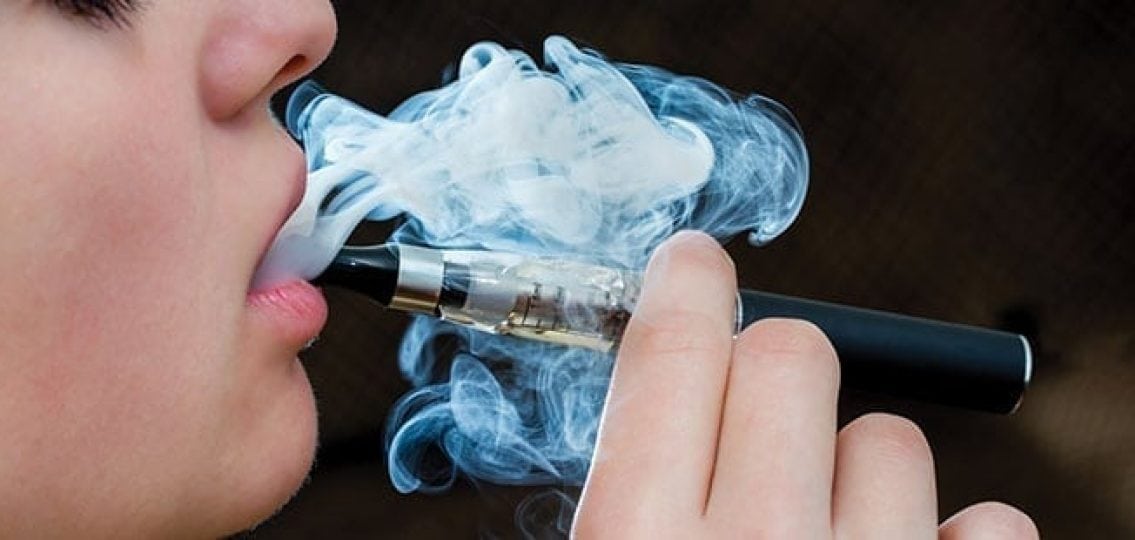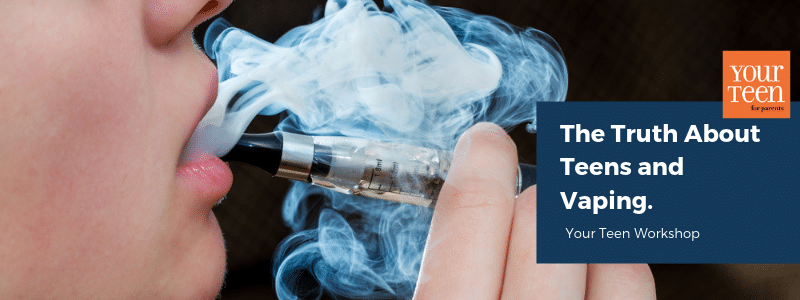First, the good news: Teen smoking isn’t as cool as it once was. Over the past 40 years, smoking rates among teens have fallen nearly 23 percent.

The not-so-great news? More than 3.6 million middle and high school students use e-cigarettes (vape). E-cigarettes are battery-powered devices that heat a liquid (“juice”), turning it into an aerosol that the user inhales. E-cigarettes don’t produce the same mix of tar and carcinogens as conventional cigarettes, but they’re far from harmless, says Steven Schroeder, M.D., director of the Smoking Cessation Leadership Center in San Francisco.
The juice in e-cigarettes is available in enticing flavors like mint, mango, tobacco, or crème brûlée. While the FDA has made plans to limit the sale of the sweet-flavored products, at this time, there is no ban on them even though it is known that adolescents tend to prefer these flavors.
 Furthermore, the juice also contains nicotine, but research shows that only a quarter of high schoolers know this. Juice may also contain other chemicals known to be toxic to humans, such as ethylene glycol, a chemical used in antifreeze; formaldehyde; volatile organic compounds; and heavy metals, like lead and diacetyl.
Furthermore, the juice also contains nicotine, but research shows that only a quarter of high schoolers know this. Juice may also contain other chemicals known to be toxic to humans, such as ethylene glycol, a chemical used in antifreeze; formaldehyde; volatile organic compounds; and heavy metals, like lead and diacetyl.
According to the U.S. Surgeon General, six out of 10 teens believe that using e-cigarettes causes only “a little” or “some” harm, as long as they don’t vape daily. But that’s not true.
The risks range from the physical to the psychological. Nicotine in any form isn’t healthy for a teen’s lungs, teeth, or brain, which is still growing until around age 25. According to a study in the Journal of Physiology, nicotine exposure in adolescence can make the brain sensitive to other drugs and prime it for future substance abuse.
Just as with regular cigarette smoking, the nicotine from vaping gets into the lungs and bloodstream, and keeps the smoker coming back for more. “You can get addicted to an e-cigarette,” says Bill Blatt, director of Tobacco Programs for the American Lung Association. In teens, nicotine is more addictive and can mess with the brain’s hardwiring, leading to mood disorders and permanent impulse control. Plus, e-cigarette smokers are four times more likely to become traditional cigarette smokers. On top of these concerns, e-cigarettes can also be used as a delivery system for marijuana and other drugs.
The FDA has banned the sale of e-cigarettes to minors, but teens still find ways to get them. Even if you don’t think they are vaping, it’s worth discussing—e-cigarettes are easy to hide. Because the smoke isn’t as noticeable as it is with regular cigarettes, a teen can take a draw from a vaping pen and put it in their pocket without an adult seeing it. “They can even smoke in class,” Blatt says.
3 Ways to Share the Risks of Vaping to Your Teen:
1. Initiate an ongoing conversation instead of a lecture.
Start casual conversations about the dangers of e-cigarettes, such as when you see an ad on TV or come across an e-cigarette shop while driving together. (E-cigarette stores are fairly common now, and usually have some form of the word “vape” or “vapor” in their names.)
Or, to get your teen talking, ask them what they think about e-cigarettes. As the conversation gets going, mention that vaping can be as addictive as smoking regular cigarettes and that it’s bad for your brain, making it harder to concentrate and control your impulses. Texting is another great way to communicate your message. Your teen can read the info at the timing of their choice without feeling lectured.
2. Ask a pediatrician or coach to talk to your teen.
A trusted adult can have a huge impact on your teen’s understanding of the risks, and teens hear the same information differently when delivered by a non-parent.
3. Set a healthy example.
Even though you may be doubting whether your teen notices you at all, studies repeatedly confirm that your teens still see you as a major role model in their life. So if you’re among the 36.5 million Americans who smoke, do your best to quit. According to a study in the American Journal of Public Health, parents who smoke are more likely to have teens who smoke.

If you or your teen have developed the unhealthy habit of smoking, now’s the time to get support. To increase your chances of kicking the habit, meet with a smoking-cessation counselor, join an online program such as the American Cancer Society’s Great American Smokeout (cancer.org/smokeout), or call the Center for Disease Control’s national tobacco quit line (800-784-8669), which is staffed with professional counselors.





